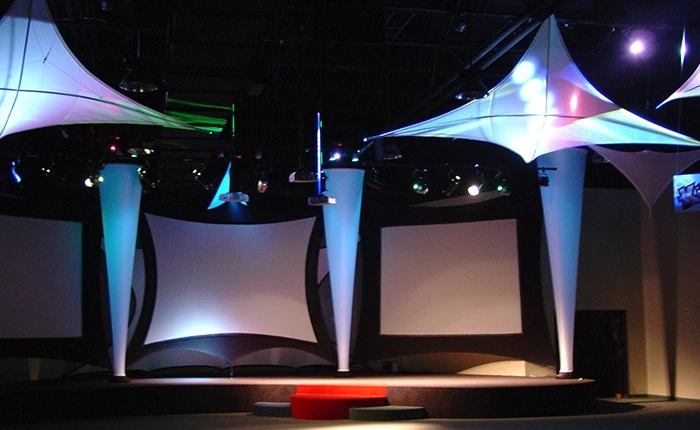Have you ever watched a captivating play or musical and wondered how the performers managed to transport you into their world so effortlessly? The answer lies in the art of creating dramatic stage presence, and one crucial element that contributes to this is theatrical curtains. These magnificent pieces of fabric not only serve practical purposes like setting scene changes but also add an extra layer of visual appeal to any production. In this blog post, we'll explore the ways in which theatrical curtains can be used effectively on stage to create a mesmerizing experience for audiences. So sit back, grab some popcorn, and let's dive right in!
What are theatrical curtains?
Theatrical curtains are an essential component of any stage production, providing more than just a backdrop for the performers. They come in various materials and designs that can enhance the visual appeal of performances through lighting effects, shadows, and textures.
One of the most common types of theatrical curtains is called "grand drapes" or "main rag." These are typically made from heavy velvet or velour fabrics and serve as the primary curtain that opens or closes at the beginning and end of productions.
Another popular type is called "legs," which are tall, narrow curtains used to mask offstage areas. These usually flank either side of the main rag to frame it visually while hiding actors waiting in wings nearby.
The third type is known as a "border," which runs horizontally across the top portion of a stage. Borders often feature intricate patterns or designs that add depth to scenes by creating illusions like sky or buildings.
Theatrical curtains play an integral role in creating immersive environments on stage. By using them creatively alongside lighting effects and other elements such as props, costumes, and staging techniques - you can achieve dramatic results that transport your audience into another world altogether!
How to use theatrical curtains to create dramatic stage presence
When it comes to creating a dramatic stage presence, theatrical curtains are an essential tool for any performance. They have the ability to transform a bare stage into a breathtaking and captivating setting that draws in audiences.
One way to use theatrical curtains is by manipulating their movement and placement on stage. For example, opening or closing them at just the right moment can create suspense or reveal important elements of the performance. The timing and speed of these movements should be rehearsed thoroughly to ensure they add to the desired effect.
Another technique is using different colors, textures, and styles of curtains to match various scenes and emotions throughout the show. Heavy velvet drapes may signify grandeur and elegance while gauzy sheers can evoke feelings of lightness or whimsy.
Lighting also plays a significant role in maximizing the impact of theatrical curtains. A well-placed spotlight can highlight intricate details on curtain designs or cast shadows for added depth.
When designing your set with theatrical curtains, it's crucial to consider not only how they look but also how they sound as they move across metal tracks above. Be mindful of this when selecting materials so that even minor adjustments don't detract from audience immersion.
Using theatrical curtains effectively requires careful consideration and attention to detail during all stages of production planning - from design conception through final performance preparation!
Tips for using theatrical curtains
When it comes to using theatrical curtains, there are a few tips that can take your stage presence from good to great. Here are some things to keep in mind:
1. Choose the right fabric: The material of your curtains can make all the difference. Consider factors such as opacity, weight, and texture when selecting your fabric.
2. Use lighting to enhance the effect: Lighting is crucial for creating a dramatic atmosphere on stage. Use different colors and intensities of light to highlight specific areas or create different moods.
3. Experiment with different styles: There are many types of theatrical curtains available, so don't be afraid to try out different styles and designs until you find what works best for your performance.
4. Pay attention to placement: The placement of your curtains can also affect their impact on stage. Think about how they will open and close, where they will hang when not in use, and how they will interact with other props or scenery.
By following these tips, you'll be well on your way to creating an unforgettable spectacle with theatrical curtains!
Conclusion
Houston Theatrical curtains are not only functional but also have a significant impact on creating dramatic stage presence. By using the right type of curtain and incorporating creative lighting techniques, you can transform any performance space into a visually stunning work of art that captivates and engages your audience.
Remember to take the time to carefully consider your options when selecting theatrical curtains for your production. Think about what effect you want to achieve and how different fabrics and colors might help bring that vision to life. And don't be afraid to experiment with different textures, patterns, and designs until you find the perfect combination that truly speaks to your artistic expression.
With these tips in mind, you're sure to create an unforgettable theatrical experience that will leave audiences talking long after the final curtain call. So go ahead – let your imagination run wild, embrace your creativity, and see where it takes you!


